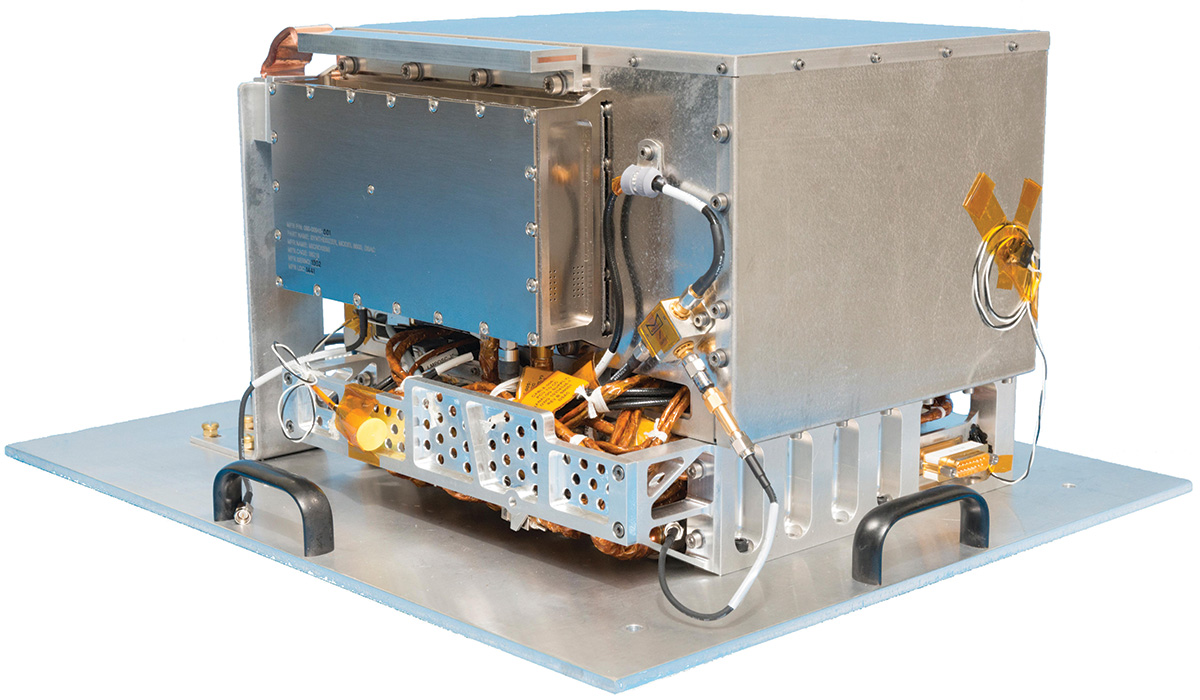
Todd Ely's team already has demonstrated a trapped-ion atomic clock operating in space.
The Deep Space Atomic Clock's long-term performance from 2019-2021, hosted aboard the General Atomics Orbital Test Bed satellite, was an unquestioned success, showcasing its potential as a next-generation tool for spacecraft navigation, radio science and global positioning systems.
The set of requirements the team from NASA's Jet Propulsion Laboratory set out to achieve when it first started the project were "far exceeded in many ways," AAE alumnus Todd Ely said, in that DSAC was more than an order of magnitude more stable than the atomic clocks that are flying in the GPS constellation today, on short-time scales under a day and also long-time scales as well. DSAC also had the lowest recorded drift in a space clock that had been deployed to date.
"The clock has done some really great things, and people are beginning to recognize that," said Ely, who has been principal investigator on the project since its inception in 2011.
NASA selected a follow-up to DSAC in June 2021. Built by JPL and funded by NASA's Space Technology Mission Directorate, the Deep Space Atomic Clock-2 (DSAC-2) will fly on the VERITAS mission to Venus in the late 2020s.
The goal of the initial DSAC was, generally, simple: Get it to work in space and characterize its performance in low-Earth orbit. The next step is more ambitious, applying what was learned from DSAC to potentially revolutionize deep space navigation. Some tweaks will be made in the second iteration in order to reduce size, weight and power to make it more amenable for future use.
"We want to design DSAC-2 so that somebody would want to build it again and deploy it in a number of potential uses, whether it be for NASA, DoD or even commercial uses," Ely said. "As we go out farther into space, whether we start having more presence at the Moon, going to Mars, if we have a sustained presence at those places, especially if humans start going there, you're going to want to have GPS-like equivalents in those types of places. DSAC would be an important element in any of those infrastructure elements."
Ely's Purdue background has him well-suited to lead those developments.
A former student under Kathleen Howell, the Hsu Lo Distinguished Professor of Aeronautics and Astronautics, Ely (BSAAE '86, MSAAE '88, PhD AAE '96) has developed deep-rooted knowledge and experience in astrodynamics, whether it be in orbital mechanics or in navigation. Throughout Ely's career, he's investigated new ways to do navigation, whether it be adaptive navigation or, in DSAC's case, stepping stones to what is called autonomous navigation. DSAC will play a role in the latter, he hopes.

Alumnus Todd Ely has been principal investigator on the Deep Space Atomic Clock since its inception in 2011. Photograph NASA/JPL
Because of DSAC's low sensitivity to variations in temperature and magnetic fields and robustness to radiation, it's particularly amenable for space. The level of the space clock performance will enable one-way navigation in which signal delay times are measured in situ, making near real-time navigation of deep space probes possible and useful for radio science investigations of planetary atmospheres, gravity fields and more.
Atomic clocks are a key component for accurate one-way space navigation, allowing spacecraft to know their own speed and trajectory rather than needing to bounce radio metric signals back and forth between the spacecraft and a ground station on Earth. That process, which can take many hours for deep-space missions, always will be an option. But clocks onboard spacecraft with superb stability enable precise in situ measurements (at the nanosecond level or better) of distance needed for many deep space navigation applications. An error of even one second can mean the difference between landing on Mars or missing it by hundreds of thousands of miles.
"The ability to have an onboard navigation solution will be important for risk reduction and ensuring health and safety of astronauts," Ely said. "With DSAC, you can make that measurement on board. If the measurement is on board and you pair that with a navigation system that could process that data, then you have an onboard potentially autonomous navigation solution."
It could be many years before Ely knows the results, but he expects to keep enjoying the "amazing ride."
"It's been a phenomenal job," he said. "It's one of those satisfying jobs where you envision it, you plan it, you build it and you execute it and then you work hard on figuring out ways where it could do best in the future. I've been able to participate in all of those activities. The team that has been working on it has been phenomenal.
"I hope to keep on doing it in the future and make a difference. I think that's what we all start out our education saying. ‘That's cool stuff to get involved with.' If you're lucky, you get to do cool stuff. And I think I've been lucky."